In the Alters’ World (and the Agent of Argyre series), creatures of legend reveal themselves to the world. Born through genetic abnormalities, defects and mutations, the Alters have lived for centuries as outcasts of human society, hiding their true nature from the world while colorful stories have been written by many to describe what they’ve seen. How are these creatures different from what was described in the stories? What relationship do they have with humanity? Every entry of the Alterpedia will delve into a new creature from around the world. This week we cover:
Merfolk
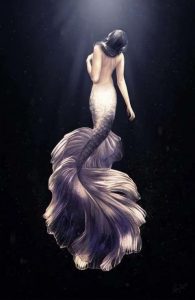
Spoken of in superstitions among the sailors of many cultures, long have humans spoken of creatures of the ocean deeps – some malicious and some friendly. Among these, the most iconic is often said to be the Mermaid, beautiful maidens with half human, half fish bodies which many a weary sailor swore he’d seen in the distance. Though many stories have long since been attributed to creatures such as Manatees, the fact remains that the stories of seeing a human face on such creatures persisted for some time and never truly went away. After all, how could you really mistake this for a beautiful woman swimming alongside your ship?
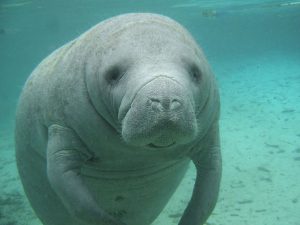
So the question remains, could such creatures exist? Where would they live? And could you really mistake them for other marine mammals? Are the mermaids and mermen really down there?
Appearance
Mythology
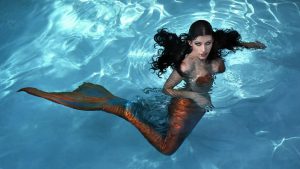
Though modern depictions often present them with more nautical features, the earliest depictions of merfolk were quite simple and easily understood. With the upper torso of beautiful men and women with hair that flows freely in the ocean currents. Their skintones range the full range of human-kind, often reflecting the people of the local region, as they’ve been sighted on almost every continent at some point in history. But, whatever race they may appear to be from, one feature is unmistakable – the great fishtail which stems from their waist.
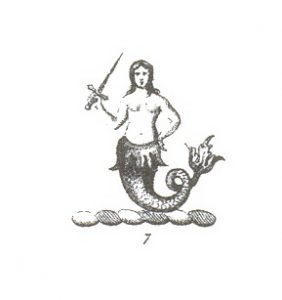
The tail itself does not reflect a specific body or style of any specific fish, rather existing as a vague collection of fish-like traits which are fairly generic but generally described as being vibrantly colorful and easily identified from a distance. Their bodies tend to be quite flexible, with the tails generally moving with the same sort of grace and fluidity of other marine mammals such as dolphins, and are sometimes depicted as still retaining some semblance of the lower human figure – a pronounced hip-like shape which is not normally found in aquatic creatures.
In terms of fashion, the merfolk may at times be completely nude or utilizing the local materials such as coral, seashells, and seaweed to fashion rudimentary clothing. Seashells, in particular, are present as a crude form of swimsuit which is generally included for the modesty of the artists rather than that of the merfolk themselves – as older artwork tends to depict them completely uncaring of such matters.

Alters
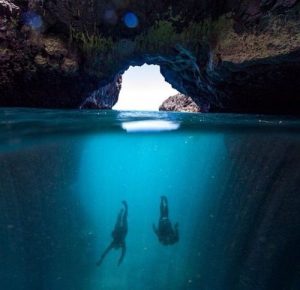
Well adapted to aquatic environments, the actual merfolk in their natural environments are quite alien in appearance at first glance. Their skin, in particular, features several adaptations which make them particularly unique in appearance. Exceptionally thin to assist them in cutaneous respiration (as described later), the best description for merfolk skin in its natural state is “translucent”. However, adopting a trait found in many cephalopods, Merfolk skin is actually full of Chromatophores, color changing cells which contain a series of pigments which may be mixed and matched to camouflage themselves and protect them from the damaging effects of sunlight in shallower waters. As a result, while naturally featuring semi-translucent skin in safe harbors, merfolk are often camouflaged to their environment in a way which provides them the most protection – sometimes even taking on the dual tones of a shark, the more elaborate patterns of octopi, or the local skintones of the surface dwelling humans.
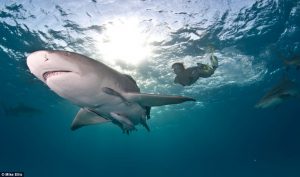
Upon reaching the surface, the majority of Merfolk can blend in with humans perfectly. Gills, necessary to supplement their respiration underwater for more extensive activity, are generally hidden along certain creases of the body – easily covered by hair or clothing. Meanwhile, though they are often depicted with a fishtail, this trait is actually quite rare and only a handful of Merfolk bloodlines actually have it. Rather, the majority of Merfolk have an adaptation of webbed feet, strong muscles, and flexible tendons which allow them to mimic the swimming style of other marine mammals and amphibians despite a mostly fixed bone structure. Though those with fishtails are, in fact, quite a deal more agile underwater, the retaining of legs allows the majority of Merfolk to be completely amphibious and lets them walk among surface dwellers when required.
During most situations, Merfolk see no purpose in clothing and tend to not focus on it very often. They remain nude underwater, lacking need of covering against the elements since their temperature is regulated by the temperatures of the waters they live in. However, on the surface Merfolk take great strides to blend in and will generally keep hidden caches of modern fashion to be used for their surface visits. In particular they focus on good shoes, as their thinner skin makes them sensitive to walking on hot or rough surfaces, often described as “like walking on glass”. In addition to this, the webbed feet are difficult to explain, as they are much more pronounced than even examples among humans and are easily noticed without cover.
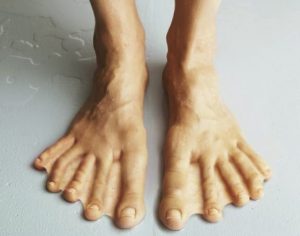
Abilities
Mythology

Generally the children of deities, deities themselves, or blessed by such entities, the Merfolk are naturally blessed with several sea-related mystical abilities. Besides the obvious ability to swim the depths of the ocean, they also held powers with aquatic relations such as the ability to summon storms, calm the seas, or create rough waves to those who did not cooperate. In fact, though rarely seen as hostile in the modern day, many stories of Mermaids presented them as potential threats to passing vessels due to their ability to help or hinder depending on their mood. Sometimes, this even presented itself with an alluring voice much like those of the Siren – resulting in some confusion in depictions between the two as their similar abilities to lead ships astray have resulted in artwork occasionally forgetting that Siren are avian in nature.

Further adding to the confusion is that Merfolk may, at times, be the end result of a shapeshifter who can take on many forms and, as such, could present themselves as a Siren if they desire. These abilities are not always voluntary, as sometimes the fish form is a punishment from above, but when it is the mermaid in question can transform back and forth at will. In other instances, where it isn’t voluntary, the Merfolk may seek the help of another to change their form as well, often as a means of traveling to the surface world and interacting with humans on land.

Alters
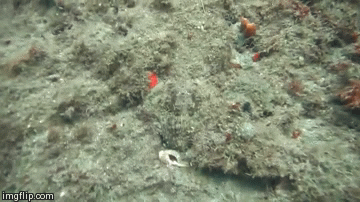
Though not mystical in nature, the aforementioned ability to change their skin color at will has made Merfolk seem magic in nature. Able to adjust their colors with such accuracy that they may appear to disappear into the waters themselves, the stories of them being completely attuned to the waters around them spread quickly. These color changing abilities have also allowed them to gain the attention of passing ships when deemed necessary and have made it possible for them to occasionally lead ships towards or away from rougher waters when desired. In addition, though not nearly as well controlled as the voices of the Siren, it is true that the Merfolk voices have an unusual range mirroring those of dolphins and other sealife – an ability they use to navigate in darker or murkier waters – and this voice can be trained to be pleasant to human hearing. However, without such training, Merfolk songs can be overwhelming and even harmful to those around them.

Besides the ability to blend in and their unusual voices, the truly impressive aspect of Merfolk biology is their advanced amphibious abilities. Merfolk respiration is a complex system, utilizing adaptations found in multiple other creatures, necessary for being able to be fully amphibious despite being far larger than conventional amphibians. Though rare in nature, the first major adaptation of Merfolk is the ability to use both lungs and gills like in the Australian Lungfish. The location, size, and complexity of gills is different between the various Merfolk races as they are generally optimized towards specific waters – geared towards the salinity, temperatures, and average oxygen levels available. However, regardless of the specifics, these gills are sufficient for most underwater activity provided conditions are good and the Mermaid or Merman in question is not under any physical strain.

However, should the need arise, Merfolk have retained fully functional lungs and may use them when necessary to either spend time on the surface or supplement their oxygen supply. The lung capacity of Merfolk is somewhat limited compared to related races such as the Selkie, but is sufficient for additional boosts during high activity or when dealing with sub-optimal waters. The most common use of these lungs among Merfolk is when swimming at top speeds, surfacing briefly to inhale and then using the lungful of air to supplement the oxygen diffused through the gills. Though not able to hold as much as the Selkie, this combination with the gills does allow them to make the most of a single breath and Merfolk need not surface to exhale again. As a result, many Merfolk seen on the surface in these instances will be seen once, and then be long out of sight by the time they surface again (if they surface again at all) – leading to many confused sailors in the past.

In addition to these adaptations, Merfolk have evolved to optimize their cutaneous respiration as well. Though all animals have some degree of cutaneous respiration, exchanging gases through their skin, the process is generally insufficient for endothermic animals in most situations. However, due to their moist environment, Merfolk skin has adapted to be similar to that of Amphibians. Though no where near the efficiency of Amphibians – which can sometimes do 100% of their respiration through their skin in cases like the lungless Salamander – Merfolk cutaneous respiration easily outpaces mammal examples such as bats – which can excrete up to 12 percent of their carbon dioxide through their wings. This adaptation is particularly beneficial due to the smaller lung capacity and the sometimes limiting nature of gills, but does mean that their skin is particularly sensitive and may be easily bruised, cut, or irritated.
Behavior
Mythology
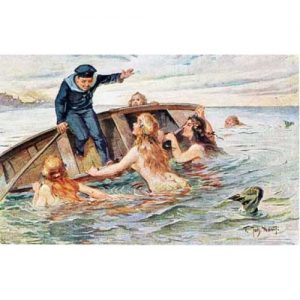
Merfolk are somewhat mercurial in nature, prone to helping or hindering the people they encounter mostly based on mood, there have even been cases where Mermaids will punish people for not knowing the answer to a question. Leading ships astray or to safety, they’re influential on the lives of those who travel the seas, but are rarely predictable until encountered. This is in part due to their many origins with some having begun as humans, others as gods, and still others who were born into the life they currently live. Often their origins greatly influence their behavior later, with those with more mundane origins generally being more even handed while those with more divine origins being somewhat extreme. However, because of the inability to be identified at first glance, sailors must treat all with caution.
Alters
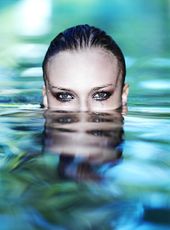
Merfolk culture is best described as xenophobic and does its best to simply avoid humans altogether. Though not hostile towards humans they’ve taken great strides to avoid direct interactions due to the barbaric treatment they’ve seen other sea creatures suffer at human hands. In particular, they’ve long held negative views on whaling and fishing practices which have harmed creatures that Merfolk have traditionally trained to work with them much the way we treat dogs. Dolphins, in particular, have long been a close friend of Merfolk which assist them in hunting and have been raised as pets in the past. As a result, several fishing practices in the past where Dolphins were captured intentionally or accidentally have caused Merfolk to be wary of the fishing fleets and any other humans they may encounter.

However, due to the fact they are distantly related to surface dwellers, Merfolk have been reluctant to completely sever ties with humans and still come to the surface in disguise. Of note is a traditional practice mirroring the Amish tradition of Rumspringa – a time when children who have come of age may see the other way of life and decide whether or not they would like to live there. Every year, teenage Merfolk are allowed to join the surface for a period of time and experience life as regular humans would, sometimes inspiring stories of Merfolk walking among people. However, like the Amish, should one of these teenagers choose to live as the humans do, they are generally separated from their families. This is rare, however, as many Merfolk are unprepared for the ways of surface dwelling humans. And, even if these things are tempting, such decisions…
Are not as easy as one would think, even for humans.
(I write novels and dabble in screenplays. You can also find me on twitter, where I’m sure someone will tell me I haven’t researched “real” mermaids at some point.)







